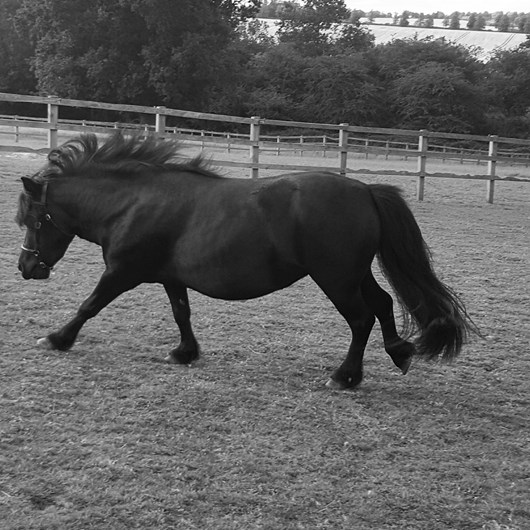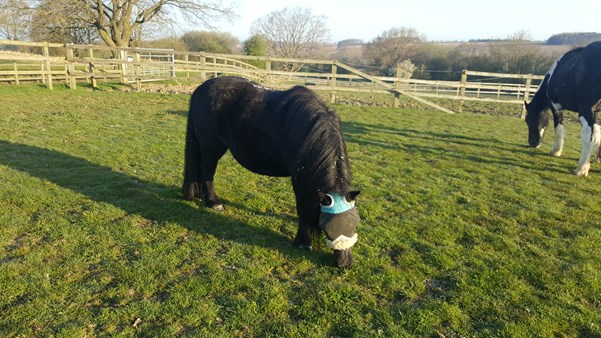The weather recently has been providing perfect conditions for an increased risk of laminitis to horses and ponies, with cold frosty nights and sunny days increasing the sugars in the grass. The next week or so sees warmer overnight temperatures and some rain, so the grass will be growing rapidly. Laminitis is such a horrifically painful condition and leads to the death of many horses and ponies each year.
Having mostly owned coldblood types such as cobs and native ponies, it is something that has always struck fear in me, and at this time of the year I am more than a little paranoid with twice daily checking for digital pulses, warm feet and also trotting up on the concrete yard to check for soundness. Turning in very tight circles also can reveal if your horse or pony is sore. At this time of year, being a little “footie” is something to take seriously whatever type of horse or pony you have.

Mabel, Diva and Jackson are all being monitored carefully and having restricted access to grass. All are native / coldblood types and could be more susceptible. Diva seemed to have put on weight overnight, so I am now soaking her hay to remove some of the sugars and aid with a little weight loss campaign I have planned. Now she is four years old she is maturing, and instead of growing upwards she is tending to grow outwards. She has my sympathies with this! LOL!
One thing to bear in mind is that despite many feed products being designed for overweight or laminitic-prone equines, they all do contain extra calories and for native ponies even these feeds may push them over the edge at times of high risk.
Weight tapes are often said to be inaccurate, however, one thing they certainly can help with is when you are trying to get your horse or pony to lose weight, as regular checking will let you know whether they are getting rounder or slimmer.

The facilities on the yard are excellent with me being able to make use of the horse walker, as exercise is good for them, especially the Shetlands. There is also the round pen which I can use to have the ponies outside but not on the grass. If I put one of the ponies in there, I can totally control the amount they eat as I put their hay ration out with them.
I will spend the weekend ensuring that my electric fencing is in place to begin to strip graze the paddock whilst the grass is growing. I will move the fence by a meter or two when necessary, to give them a little new grass but not so much to cause problems. I better make sure I have plenty of batteries for my energiser.





